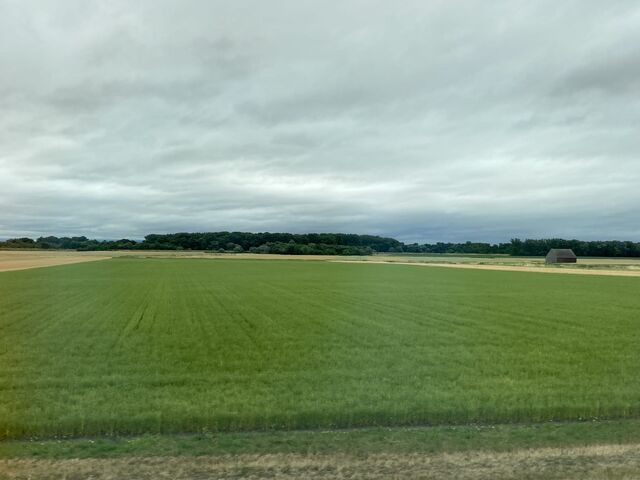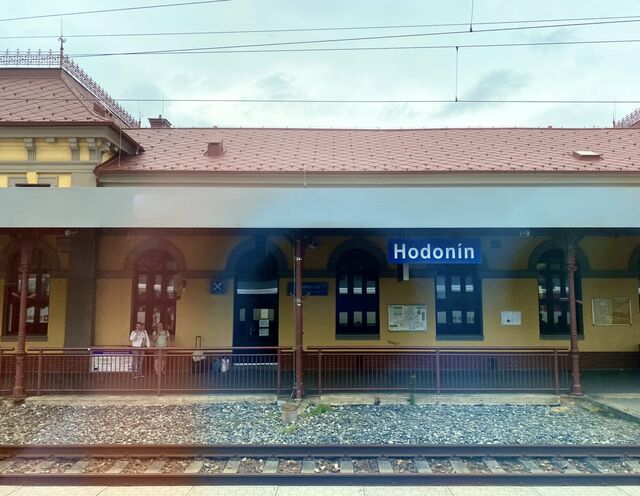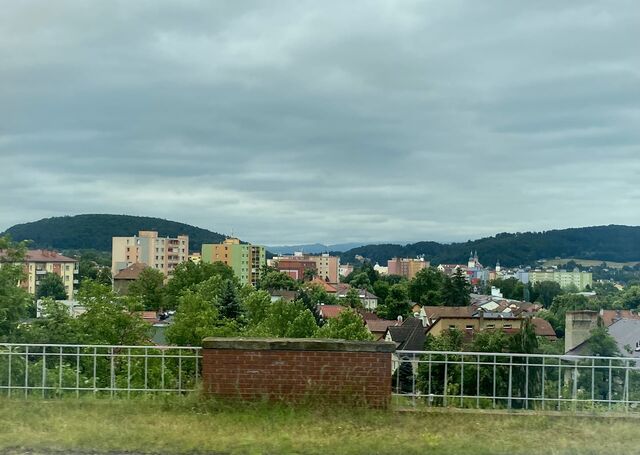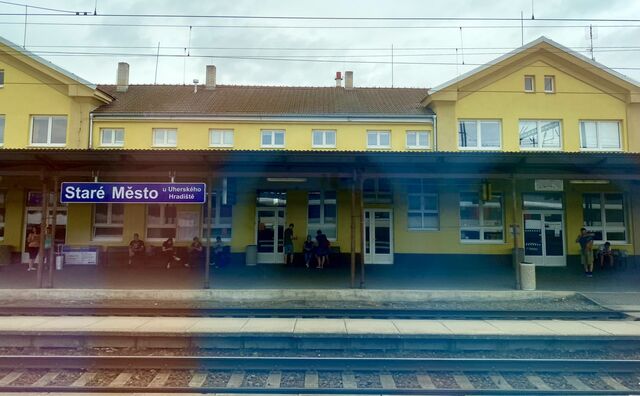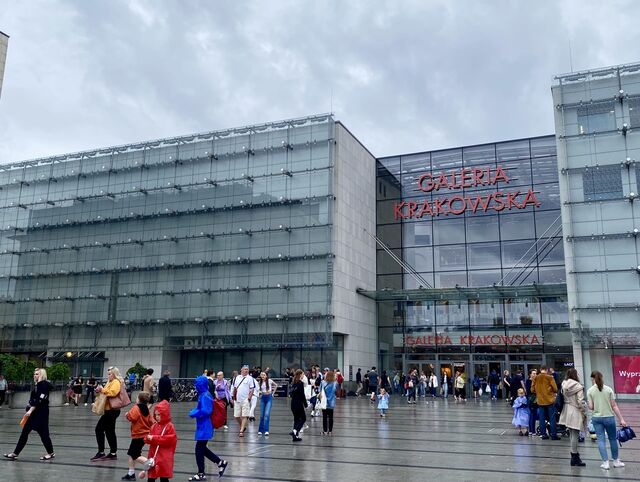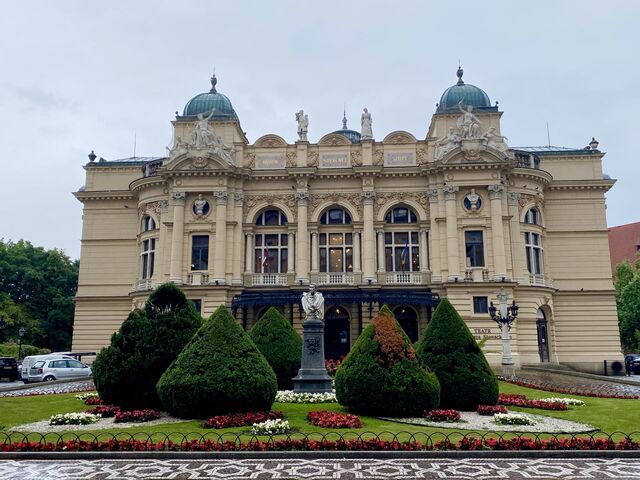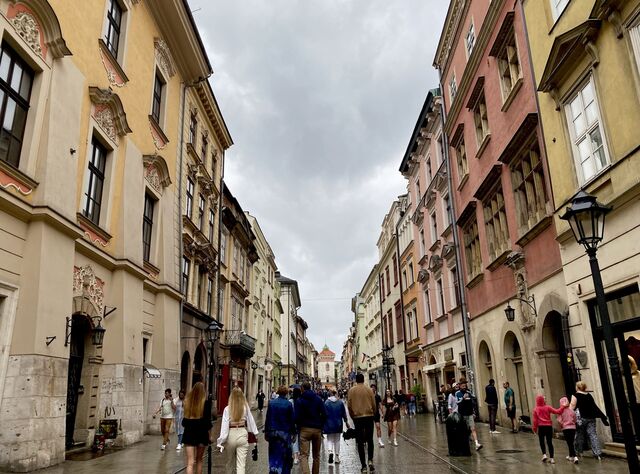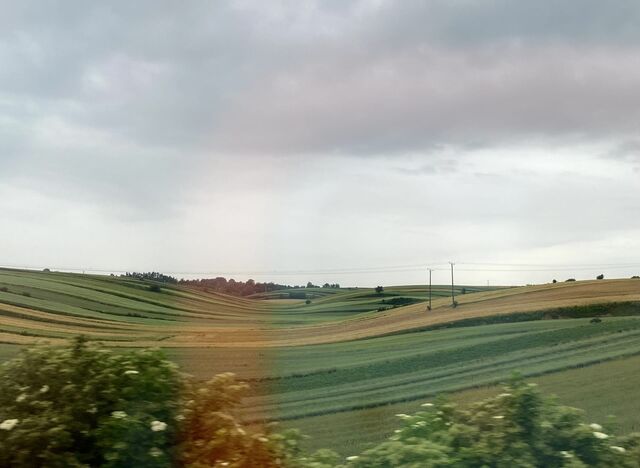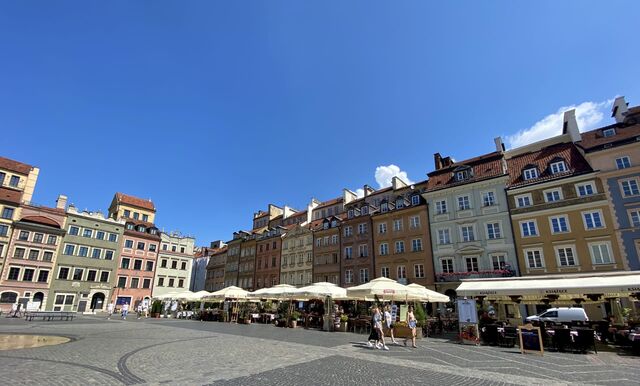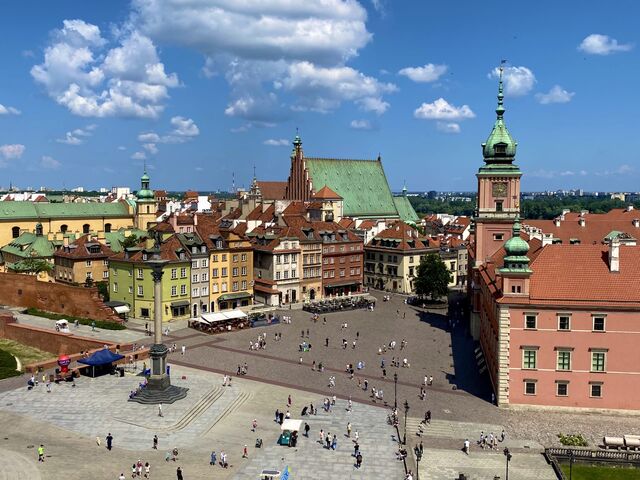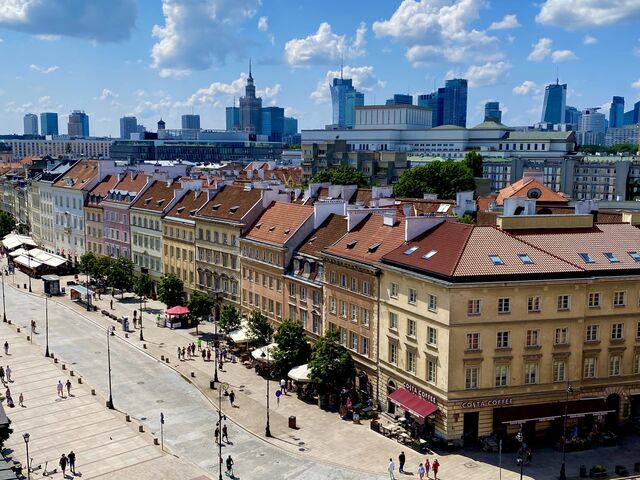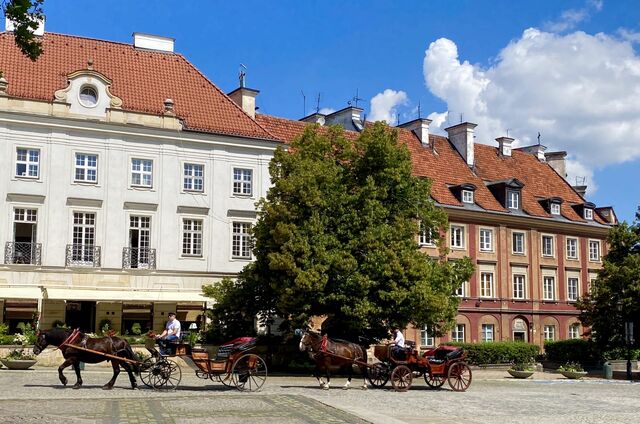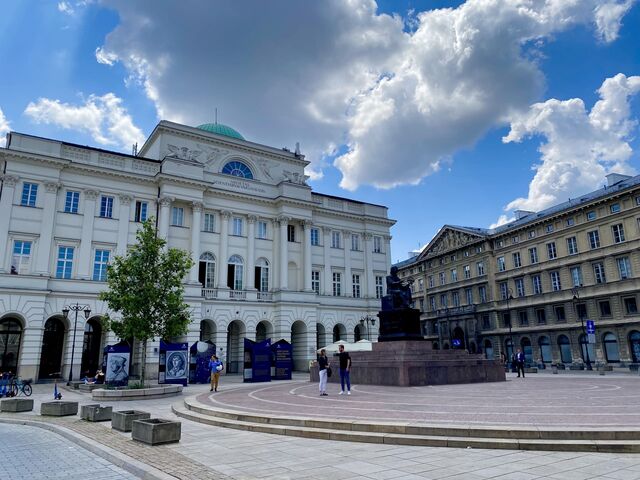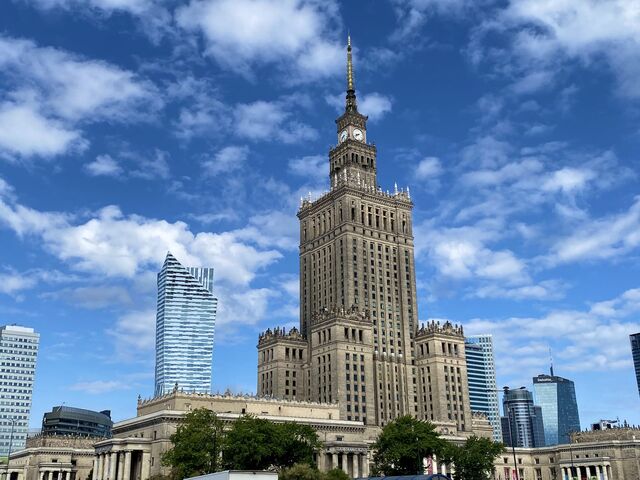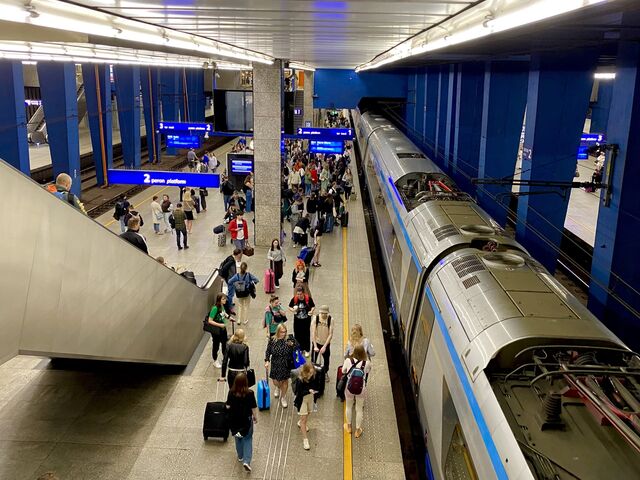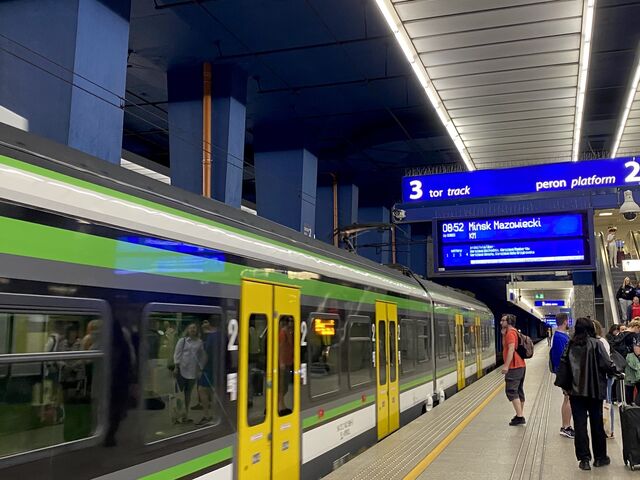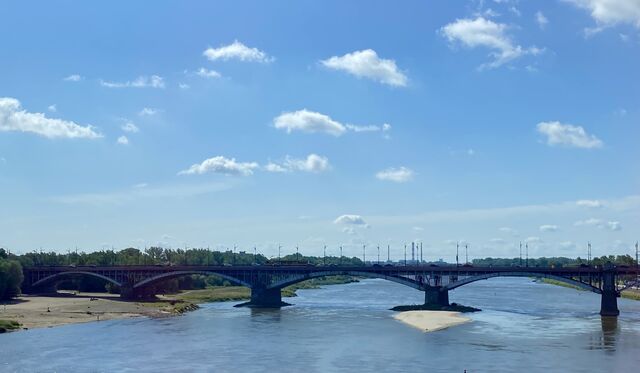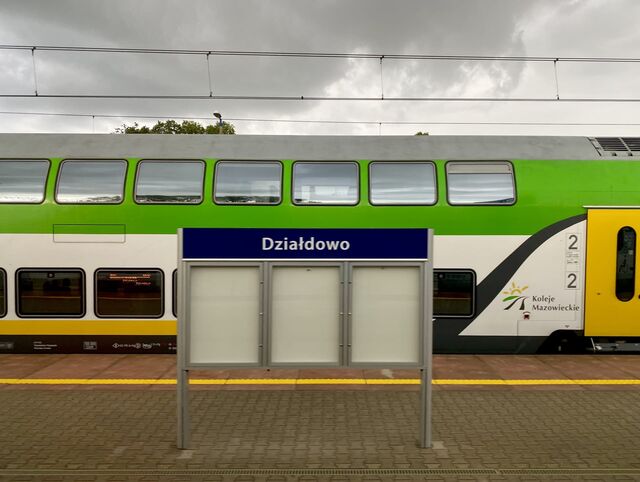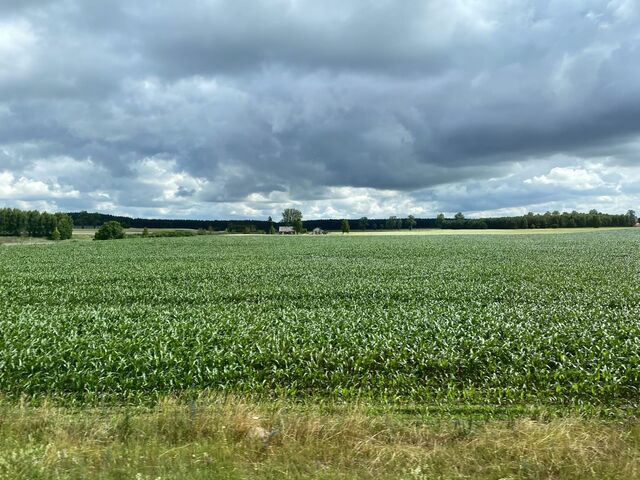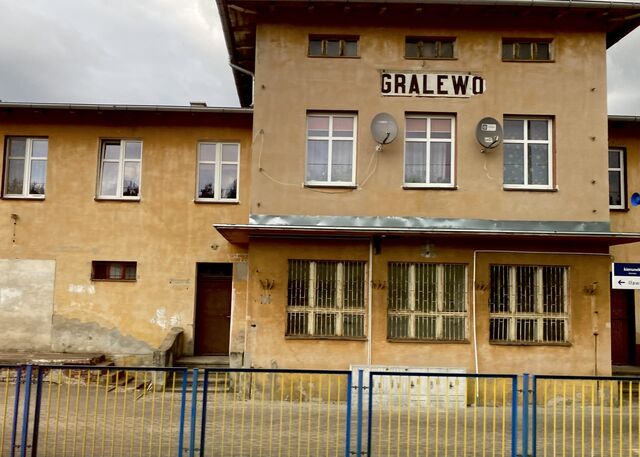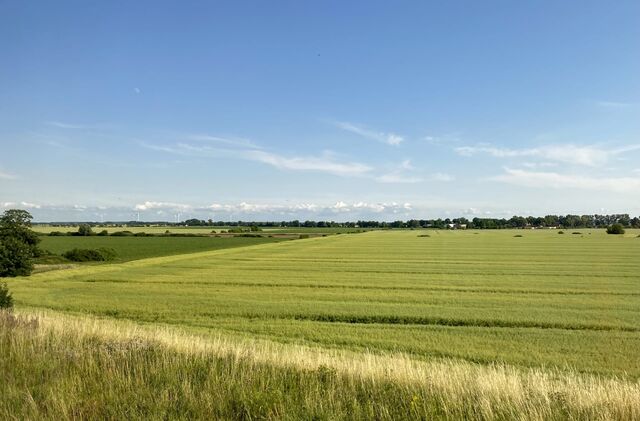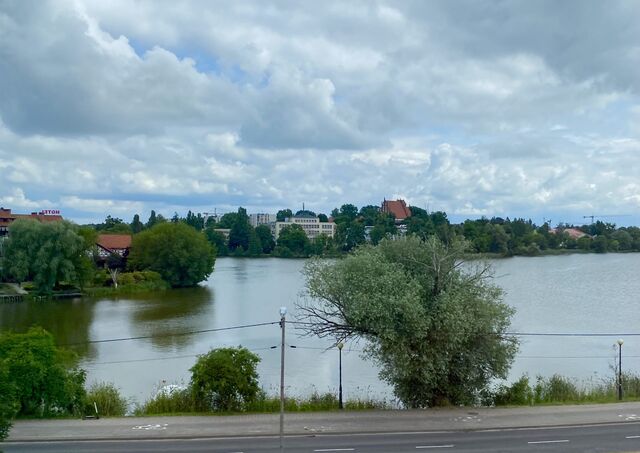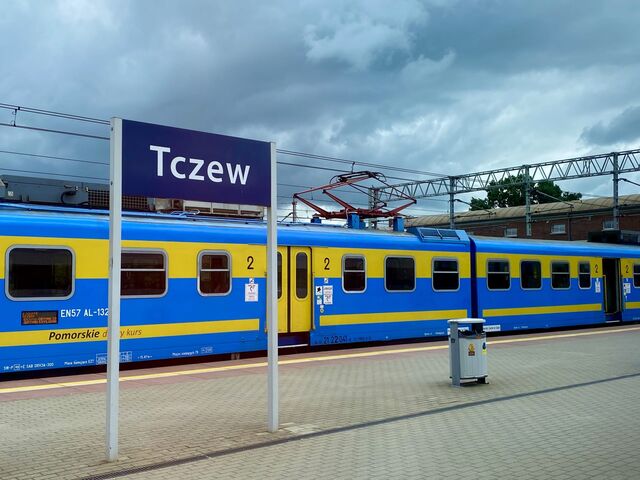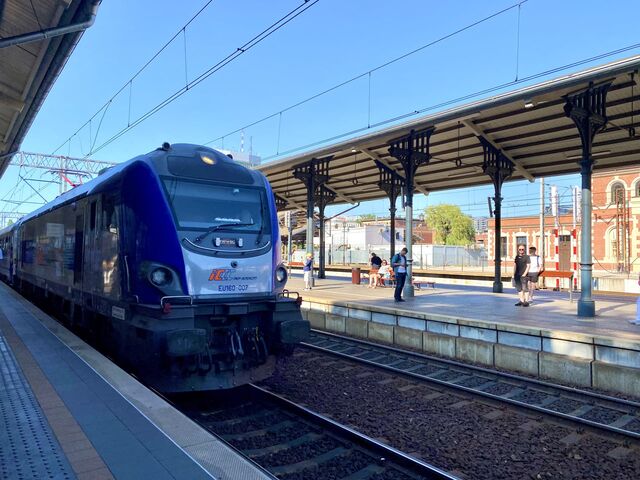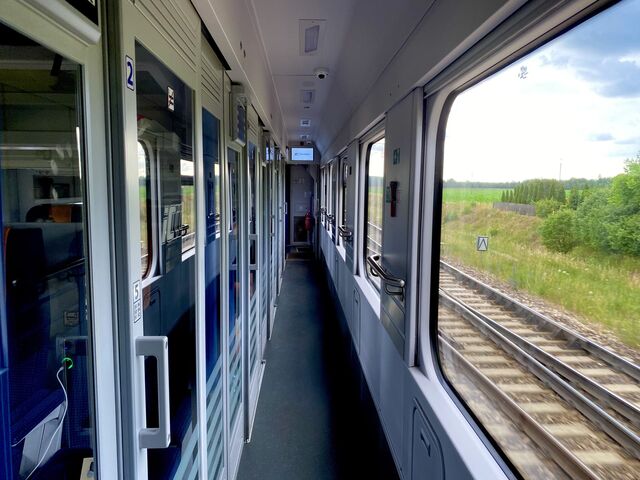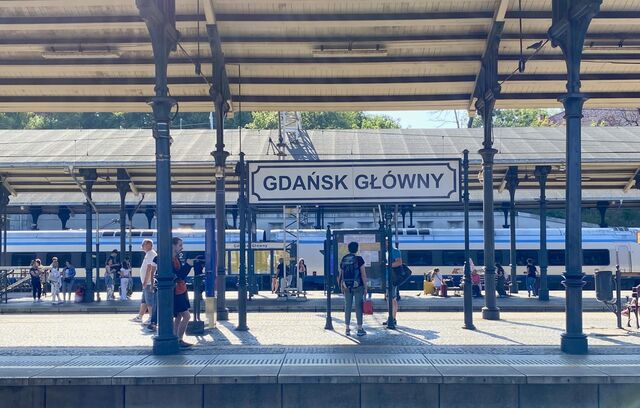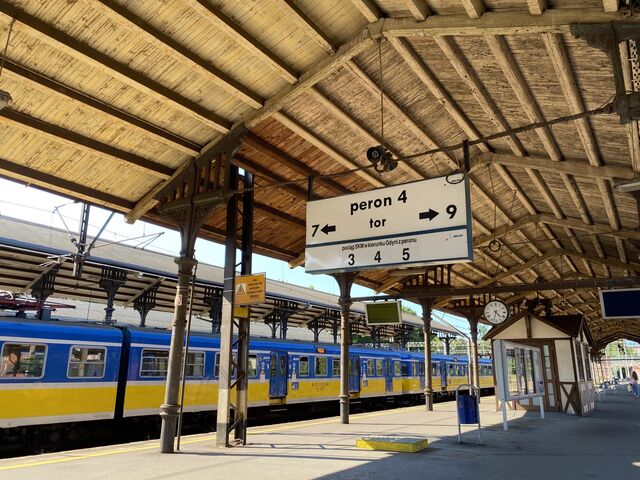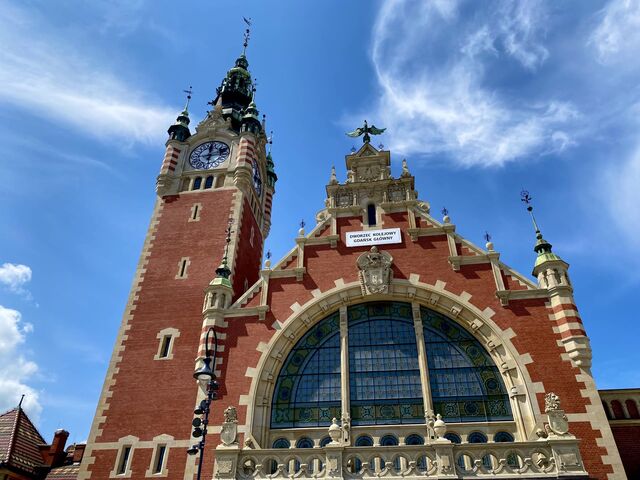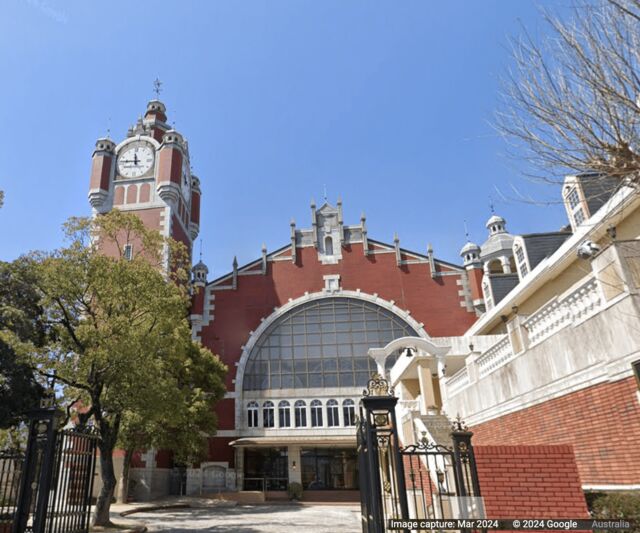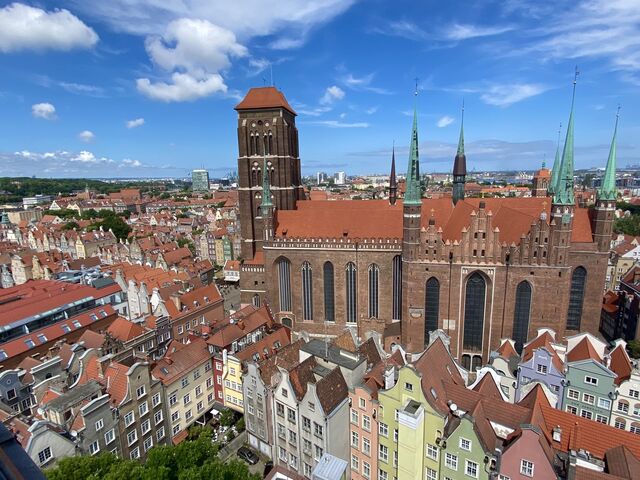The final segment of my rail trip took me from Vienna, Austria to Warsaw, Poland (via Czechia). While in Poland, I also took a separate rail trip to Gdańsk on the Baltic Sea. The below map shows my route.
Rail transport in Poland traces its origins to the early 1800s, with the railways constructed under Prussian, Russian, and Austrian governance. The railway line linking Vienna and Warsaw was opened in 1848, following a joint effort between Austria and Russia to connect these two cities by train. The section of track from Warsaw commenced operation in 1845 and the occasion was marked by a parade of ten steam locomotives decorated with flowers and accompanied by a military band.1 When the railway between Vienna and Warsaw was complete, the journey by train took 37 hours2—much longer than the 8.5 hours it took me to travel between these cities 175 years after the railway commenced operation.
The Polish railway network was severely damaged by the German bombing campaign during the invasion of Poland in World War II. It is estimated that 38% of all railway lines and 6,000 steam locomotives, alongside 60,000 railway wagons, were destroyed during the War.3 Today, the Polish railways are undergoing significant development, with a new high-speed rail network expected to commence operation from the late 2020s.4
Vienna–Kraków
The trip from Vienna to Kraków took just over 5.5 hours and cost €42 for a second-class ticket. The train travelled along the border between Austria and Slovakia, before traversing Eastern Czechia and crossing the border into Poland. The images below show some of the distinctive yellow stations where the train made stops in Czechia.
I had about 3.5 hours in Kraków before boarding my next train to Warsaw. The main train station is conveniently located in the city centre. It was completely rebuilt in 2014 and merged with the adjacent Galeria Krakowska shopping centre. The main entrance to the shopping centre doubles as the entrance to the train station. The original station, which dates back to 1846, exudes far more charm.
After a short walk, I arrived in Kraków’s Old Town, where tourists are carried by horse-drawn carriages around the perimeter of Kraków’s Main Square. Unlike most of the other major cities in Poland, Kraków emerged from World War II almost entirely unscathed. Today, it is the country’s most popular tourist destination. During my short time in the city, I witnessed numerous gatherings of boisterous and inebriated individuals, predominantly of British origin, wandering aimlessly through the Main Square and adjacent streets. Many seemed to be participating in stag or hen celebrations. This created quite the unrefined atmosphere that largely detracted from the city’s charm. I also ventured inside the medieval Cloth Hall—a covered market just off the Main Square—but found this to be extremely crowded and tacky.
Pictured below are some of the main sites in Kraków, including the Main Square which my guidebook describes as rivalling St Mark’s Square in Venice ‘as one of the finest piazzas in Europe’.5
Kraków–Warsaw
After a rainy few hours in Kraków, I returned to the station to board my train to Warsaw. The journey between Kraków and Warsaw took approximately 3 hours and the scenery was uninspiring. The cost of my train ticket was 43 Polish złoty (approximately €10). Somewhat inconveniently, I had to change trains in the town of Włoszczowa, where I had about a 30-minute wait for the connecting service to Warsaw. I was travelling on an InterCity (IC) train, but if you wish to avoid the transfer in Włoszczowa, Express InterCity Premium (EIP) trains provide a direct service between Kraków and Warsaw.
Warsaw
I arrived into Warsaw in the evening and made my way straight to my hotel, Motel One Warsaw-Chopin, which was conveniently located near the University of Warsaw. I had six days in the city and the purpose of my visit was to attend an academic conference where I presented my PhD research. A few people with whom I had spoken to prior to visiting Warsaw were not too fond of the city. My experience, however, was entirely different. I thoroughly enjoyed my time in Warsaw, from wandering the charming cobblestone alleyways of its historic Old Town (which dates back to the 13th century), to exploring its modern city streets.
I found Warsaw to be far more appealing than Kraków which, as noted above, I felt was overcrowded with inebriated tourists. By the end of my six day visit, Warsaw had secured its place as one of my favourite cities in the world. While about 85% of Warsaw was destroyed during World War II, the city’s historic buildings have since been meticulously reconstructed. Outside the Old Town, the Palace of Culture and Science, located in central Warsaw, is a distinctive ‘wedding cake’ skyscraper that was a ‘gift of friendship’ to Poland from the Soviet Union. In actuality, the structure was imposed on the people of Poland by Soviet dictator Joseph Stalin. Constructed between 1952 and 1955, it stands as the tallest building in Poland and remains highly controversial among Warsaw’s residents. For many, it serves as a stark reminder of Soviet domiance over Poland—‘a symbol of communist occupation and oppression’6—with its erection coinciding with mass human rights violations orchestrated by Stalin. This imposing structure is pictured below, alongside other notable buildings in Warsaw, including the Royal Castle where my conference dinner was held.
Warsaw–Gdańsk
After my conference concluded, I found some time to visit the northern Polish city of Gdańsk, situated on the Baltic Sea. Eager to explore more of Poland by rail, I had heard that Gdańsk was one of the most beautiful cities in Europe. My train ticket cost 71 Polish złoty each way (approximately €16). For the outbound trip, I opted for an InterCity (IC) train, while I returned aboard an Express InterCity Premium (EIP) train. The train ride between the two cities lasted approximately 2 hours and 48 minutes, providing a delightful passage through the picturesque Polish countryside. The railway closely followed the Vistula—the longest river in Poland—for much of the route to Gdańsk.
The most exciting site en route, however, was Malbork Castle—the largest castle in the world by land area. The train passes directly beside this 13th-Century castle, providing magnificent views of the UNESCO World Heritage Listed structure as the railway crosses the River Nogat. My guidebook informed me that Malbork Castle is widely acclaimed as ‘the greatest work of medieval secular architecture in Europe’.7 Originally constructed by German crusaders to strengthen their control over the region, the castle was badly damaged during World War II. However, it has since been rebuilt and its former grandeur restored.
Gdańsk
After a pleasant journey, the train pulled into Gdańsk Główny. This is the city’s main train station and it is located about a 10-minute walk from the Główne Miasto (Gdańsk’s main town).
The station originally opened in 1900, but was destroyed by the Soviet army at the end of World War II. It was subsequently reconstructed according to its original design.
Gdańsk Główny’s impressive station building, with its iconic clocktower, shares its design with Colmar station in France (opened in 1907). Budget constraints prompted the architect of Colmar station to adopt the designs from Gdańsk, although, it seems that the architect attempted to conceal this borrowing by making subtle alterations to the top of Colmar station’s clocktower.8
Interestingly, Japan has also constructed a replica of Gdańsk Główny, albeit with a unique purpose. Instead of serving travellers, the Japanese version functions as a wedding palace! Situated in Imari—a city on the island of Kyushu in southern Japan—the Asian version of Gdańsk Główny was constructed over 80 years after the opening of the Baltic Sea original. In 1983, a Japanese railway newspaper carried an article about Gdańsk Główny, accompanied by a large photograph of the station. Captivated by its architecture, a Japanese businessman, who happened to be one of the directors of a company which ran wedding palaces, was inspired to construct a replica. However, acquiring architectural plans of the Gdańsk station was nearly impossible for a Japanese citizen in the early 1980s. Undeterred, the businessman sent a friend to Gdańsk to create the necessary sketches of the station building. During the communist era, photography of railway structures was prohibited, making accurate sketches indispensable.9 The below images show Gdańsk Główny Station, alongside its French and Japanese replicas.
Gdańsk certainly is a beautiful city, although it was extremely crowded with tourists. Like Warsaw, Gdańsk was heavily bombed during World War II. In fact, it is here that the War officially began when the Nazis attacked a peninsula on the city’s outskirts in 1939. Gdańsk’s Old Town underwent extensive reconstruction in the aftermath of the War. At the heart of the Old Town stands St Mary’s Church—the largest brick church in the world—with its 78-metre-high tower commanding Gdańsk’s skyline. Construction of the building commenced in 1343. Ascending the tower of the Main Town Hall provided spectacular views of St Mary’s Church and Gdańsk’s Old Town.
I had 5 hours to explore the quaint Old Town and stroll along the Motława River.
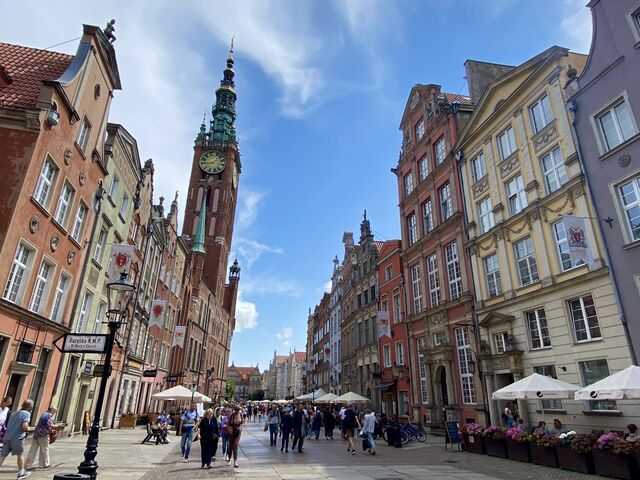
Długi Targ and the Town Hall
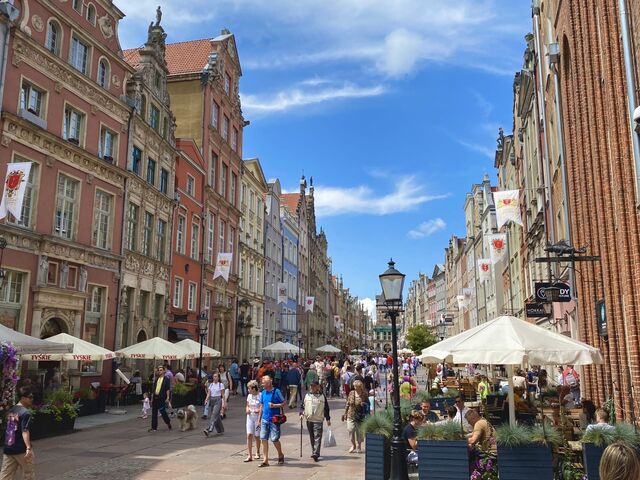
Długi Targ
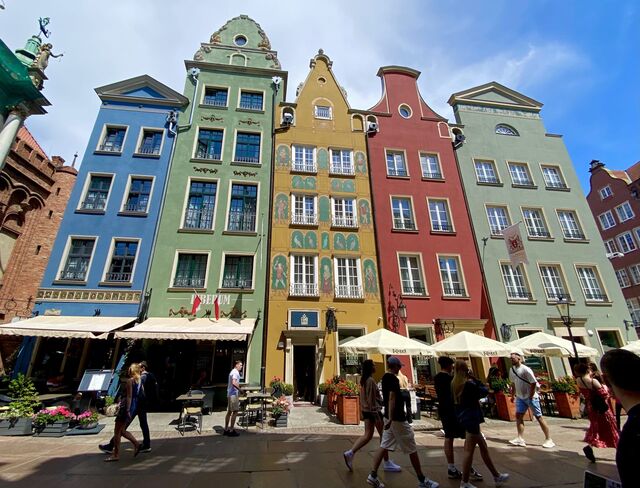
Colourful buildings on Długi Targ
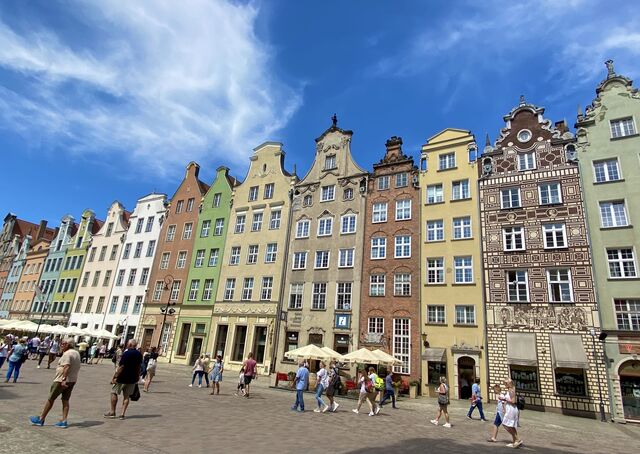
Długi Targ
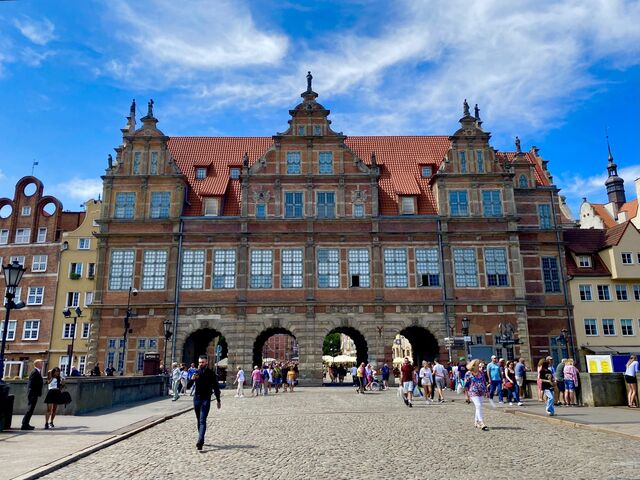
Green Gate, situated between Długi Targ and the River Motława
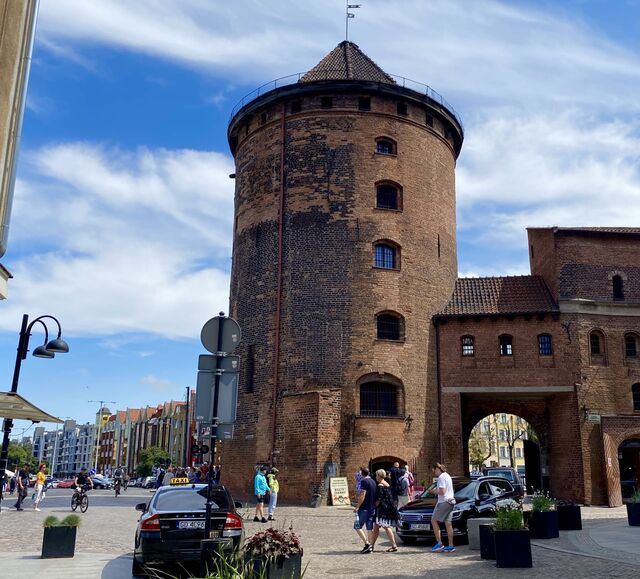
Stągiewna Gate and Round Tower
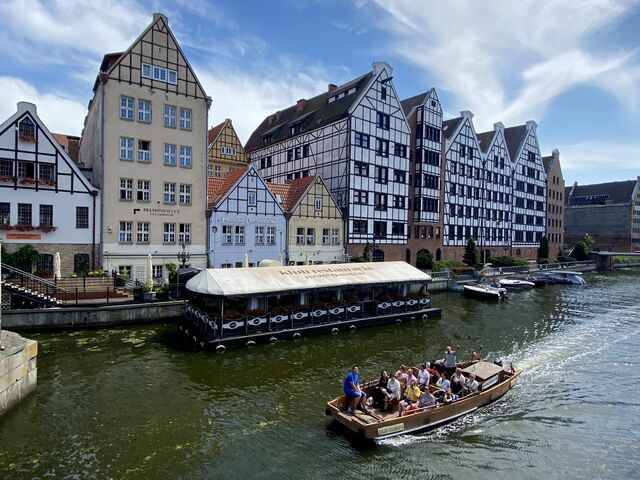
Motława River
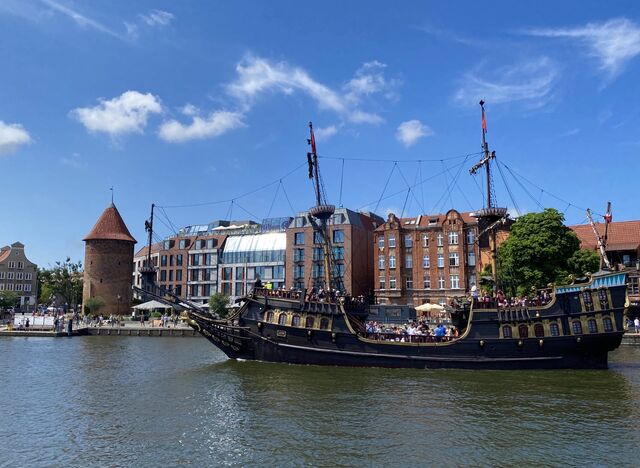
Motława River
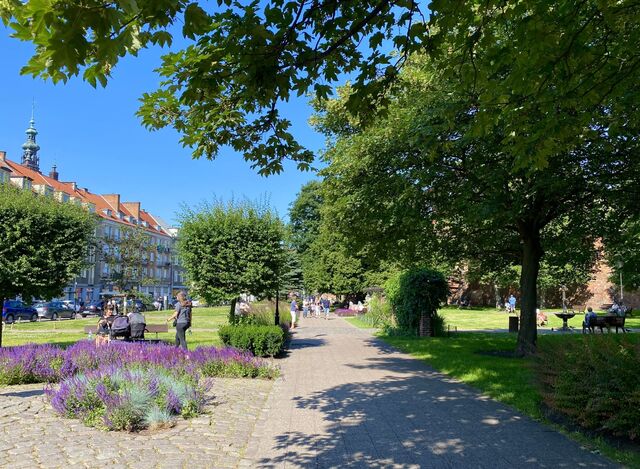
Skwer Heweliusza (Park)
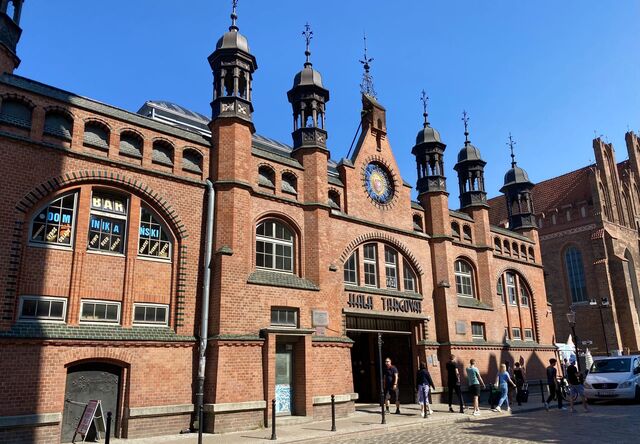
Market Hall
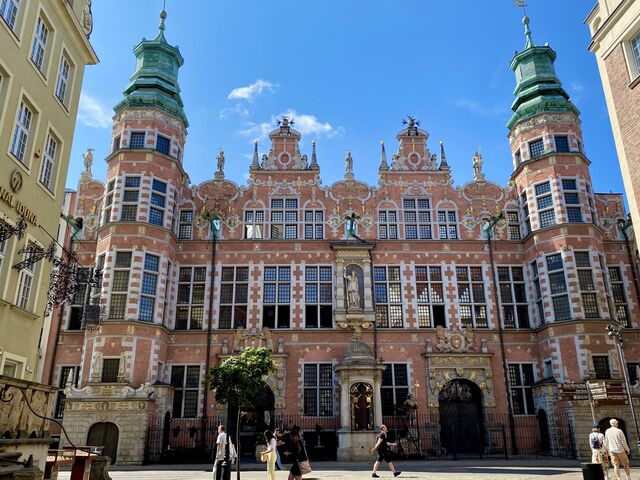
The Great Armoury, constructed 1600—1609. It was badly damaged in WWII and had to be almost completely rebuilt.
After a few hours of exploration, I enjoyed a satisfying lunch at a Polish ‘milk bar’ located in Gdańsk’s Old Town. These establishments, known as ‘bar mleczny’ in Polish, served traditional Polish cuisine at subsidised prices during the Communist era. In the early 2010s, milk bars experienced a resurgence and today operate as modest and affordable eateries. While these no-fuss cafeterias are now privately owned, Poland’s milk bars are partly subsidised by the state, enabling them to maintain low prices.10 Meal options include pierogi (dumplings with various fillings), potato pancakes, fried pork chops, and cabbage-based salads. For my meal, I delighted in potatoes and a flavourful cutlet bathed in a rich goulash sauce. After lunch, I enjoyed a spiral-shaped ice cream, which had an unexpectedly firm texture. My vanilla/chocolate selection ended up being predominantly mango/blackcurrant flavour instead, the vanilla/chocolate machine having malfunctioned after the server started filling my cone. This unexpected twist resulted in an extremely tasty combination!
As the day drew to a close, I boarded a train and made the return journey to Warsaw. This marks the end of my 2023 Europe by rail series. Thanks for coming along!
BBC, Great Continental Railway Journeys (Simon & Schuster UK, 2015) 149. ↩︎
Ibid. ↩︎
EU Railways, ‘Railways during World War II’ (online, 2020). ↩︎
Railway Technology, ‘High-Speed Railway Network, Poland’ (online, 2023). ↩︎
Nicky Gardner and Susanne Kries, Europe by Rail: The Definitive Guide (Hidden Europe Publications, 17th ed, 2023) 328. ↩︎
Ann Babe, ‘The Movement to Destroy Warsaw’s Tallest Building’ (Next City, 2018, online). ↩︎
Gardner and Susanne Kries (n 5) 287. ↩︎
The Beauty of Transport, ‘Snap! Look-A-Like Railway Stations’ (online, 25 February 2015). ↩︎
Mateusz Markowski, ‘Gdansk Główny Train Station In Japan? The Country of the Blossoming Cherry Has a Copy of it’ (WhiteMAD, online, 19 April 2024). ↩︎
See Amelia Nierenberg, ‘In Poland, Communist-Era Restaurants are Perfect for the Moment’ (New York Times, online, 2020). ↩︎

